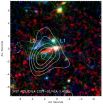Planar power
Flat sodium-nickel chloride battery could improve performance, cost of energy storage
2010-10-13
(Press-News.org) RICHLAND, Washington – A redesign of sodium-nickel chloride batteries promises to overcome some of the obstacles long associated with rechargeable batteries. Replacing their typical cylindrical shape with a flat disc design allows the battery to deliver 30 percent more power at lower temperatures, according to work published by Pacific Northwest National Laboratory in the October 8 issue of ECS Transactions, a trade journal. Researchers say these sodium-beta batteries could eventually be used in electricity substations to balance the generation and delivery of wind and solar power on to the grid.
Because the battery's main components include abundant materials such as alumina, sodium chloride and nickel, they are less expensive to manufacture than lithium-ion batteries, and could still offer the performance necessary to compete for consumers' interest. In addition, compared to other battery systems, sodium-beta batteries are safer and can help incorporate renewable energy sources into the electrical system easier.
"This planar sodium battery technology shows potential as an option for integrating more solar and wind power into our electric grid," said Carl Imhoff, PNNL electricity infrastructure sector manager at the Department of Energy laboratory.
Sodium-beta alumina batteries have been around since the 1960s but their tubular, cylindrical shape does not allow efficient discharge of stored electrochemical energy. This inefficiency causes technical issues associated with operating at high temperatures and raises concern about the cost-effectiveness of the tubular batteries.
Lithium-ion batteries surpassed sodium-beta batteries because they perform better. However, materials for lithium batteries are limited, making them more expensive to produce. Safety also has been a concern for rechargeable lithium batteries because they can be prone to thermal runaway, a condition where the battery continually heats up until it catches fire.
"The PNNL planar battery's flat and thin design has many advantages over traditional, tubular sodium nickel chloride batteries," said PNNL Scientist Xiaochuan Lu, co-author of the paper.
To take advantage of inexpensive materials, the PNNL researchers thought a redesign of the sodium-beta batteries might overcome the technical and cost issues: the cylindrical sodium beta batteries contain a thick, solid electrolyte and cathode that create considerable resistance when the sodium ion travels back and forth between the anode and the cathode while the battery is in use. This resistance reduces the amount of power produced. To lower the resistance, temperature must be elevated. But increasing operation temperature will shorten the battery's lifespan.
The researchers then tested the performance of their redesigned sodium-nickel chloride planar batteries, which look like wafers or large buttons.
The researchers found that a planar design allows for a thinner cathode and a larger surface area for a given cell volume. Because the ions can flow in a larger area and shorter pathway, they experience lower resistance. Next, the battery's design incorporates a thin layer of solid electrolytes, which also lowers the resistance. Because of the decrease of resistance, the battery can afford to be operated at a lower temperature while maintaining a power output 30% more than a similar-sized battery with a cylindrical design.
Finally, the battery's flat components can easily be stacked in a way that produces a much more compact battery, making it an attractive option for large-scale energy storage, such as on the electrical grid.
"Our goal is to get a safer, more affordable battery into the market for energy storage. This development in battery technology gets us one step closer," said Lu.
INFORMATION:
Researchers at PNNL and EaglePicher LLC received funding from the Advanced Research Projects Agency – Energy, or ARPA-E, earlier this year to conduct the research, and will work together to improve the battery's design, lifespan and power capacity.
The research was funded by PNNL and by ARPA-E.
Reference: Xiaochuan Lu, Greg Coffey, Kerry Meinhardt, Vincent Sprenkle, Zhenguo Yang, and John P. Lemmon, High Power Planar Sodium-Nickel Chloride Battery, ECS Trans. 28, 7 (2010), doi:10.1149/1.3492326 http://www.ecsdl.org/getabs/servlet/GetabsServlet?prog=normal&id=ECSTF8000028000022000007000001&idtype=cvips&gifs=Yes, in press.
ELSE PRESS RELEASES FROM THIS DATE:
2010-10-13
Australian scientists have developed a potentially groundbreaking new measure of the health of an embryo and the likelihood of a successful pregnancy in IVF treatment.
The research could lead to significantly improved birth rates in IVF to help the one in six Australian couples experiencing infertility to achieve their dream of parenthood.
It also has the potential to predict the gender of an embryo prior to implantation.
The research by the University of Melbourne and Repromed was presented this week at the Fertility Society of Australia annual scientific meeting ...
2010-10-13
Scientists from the Niels Bohr Institute have been studying distant galaxies, which are among the most active star-forming galaxies in the Universe. They form around 1,000 new stars a year – a 1,000 times more than our own galaxy, the Milky Way. The findings have been published in Monthly Notices of the Royal Astronomical Society.
"The galaxies are located in the far distant Universe – when the universe was 3 billion years old (equivalent to only 20 percent of its current age). It is a period of the Universe when the galaxies were very active, almost teenager-like and ...
2010-10-13
Using a combination of high-powered computers and advanced experimental magnetic resonance data, a Florida State University biophysical chemist has developed techniques that improve the way scientists can study and predict the structure and dynamics of proteins found in the human body. His innovations could ultimately shorten the time it takes researchers to develop new, more effective drugs and better understand biomedical processes that underlie a variety of health conditions.
The new techniques "allow us to more accurately understand protein behavior and function at ...
2010-10-13
DALLAS – Oct. 11, 2010 – The use of estrogen therapy by postmenopausal women might increase the risk of developing kidney stones, according to findings by UT Southwestern Medical Center researchers.
In a study available online and in today's issue of the Archives of Internal Medicine, investigators found that estrogen therapy after menopause increased a woman's chances of developing kidney stones by approximately 20 percent. This discovery calls into question the long-held belief that estrogen might actually protect women from the disease, and clinicians need to keep ...
2010-10-13
ANN ARBOR, Mich. – A study published in Journal of Women's Health shows a rapid increase in the number of hospitalizations due to diabetes for young adults – particularly young women.
Diabetes hospitalizations were up by 66 percent for all ages and sexes, but the number of diabetes hospitalizations among younger adults, ages 30-39, more than doubled from 1993 to 2006.
This pattern of hospitalizations echoes the dramatic increase in rates of obesity across the United States in the last 30 years, according to the study by the University of Michigan Health System.
Young ...
2010-10-13
Contrary to some previous, highly publicized, reports, ocean acidification is not likely to worsen the hearing of whales and other animals, according to a Woods Hole Oceanographic Institution (WHOI) scientist who studies sound propagation in the ocean.
Tim Duda, of WHOI's Applied Ocean Physics & Engineering Department, undertook a study in response to warnings that as the ocean becomes more acidic—due to elevated levels of atmospheric carbon dioxide (CO2)--noise from ships will be able to travel farther and possibly interfere with whales and other animals that rely on ...
2010-10-13
Scientists have shed light on how malaria is able to resist treatment with a leading drug.
Researchers have identified a gene that enables the parasite that causes the infection to resist treatment with the plant-based remedy artemisinin.
In many countries where the parasite has developed resistance to previously effective common treatments such as chloroquine, artemisinin remains the only effective treatment against the infection. However, malarial resistance to artemisinin appears to be developing, potentially creating problems in controlling malaria.
Identification ...
2010-10-13
EAST LANSING, Mich. — Despite an international effort to raise awareness about epilepsy in resource-poor nations, a recently published study found nearly 50 percent of pharmacies in Zambia do not carry antiepileptic drugs, seriously hampering efforts to tackle one of the most cost-effective chronic conditions to treat.
The study, recently published in the American Journal of Tropical Medicine and Hygiene, was led by Gretchen Birbeck, an associate professor of neurology and ophthalmology and director for the International Neurologic & Psychiatric Epidemiology Program in ...
2010-10-13
ALBUQUERQUE, N.M.— It may seem obvious that dunking relatively spherical objects in a sauce — blueberries in melted chocolate, say — will result in an array of completely encapsulated berries.
Relying on that concept, fabricators of spherical nanoparticles have similarly dunked their wares in protective coatings in the belief such encapsulations would prevent clumping and unwanted chemical interactions with solvents.
Unfortunately, reactions in the nanoworld are not logical extensions of the macroworld, Sandia National Laboratories researchers Matthew Lane and Gary ...
2010-10-13
Many young people with mental health problems are at risk of falling through a huge gap in provision when they move from adolescent to adult care services, according to new research from the University of Warwick.
A team led by Professor Swaran Singh at Warwick Medical School looked at the transition from child mental health services to adult mental health services and found for the vast majority of users the move was "poorly planned, poorly executed and poorly experienced".
In a study published in The British Journal of Psychiatry, the research team looked at 154 service ...
LAST 30 PRESS RELEASES:
[Press-News.org] Planar power
Flat sodium-nickel chloride battery could improve performance, cost of energy storage



